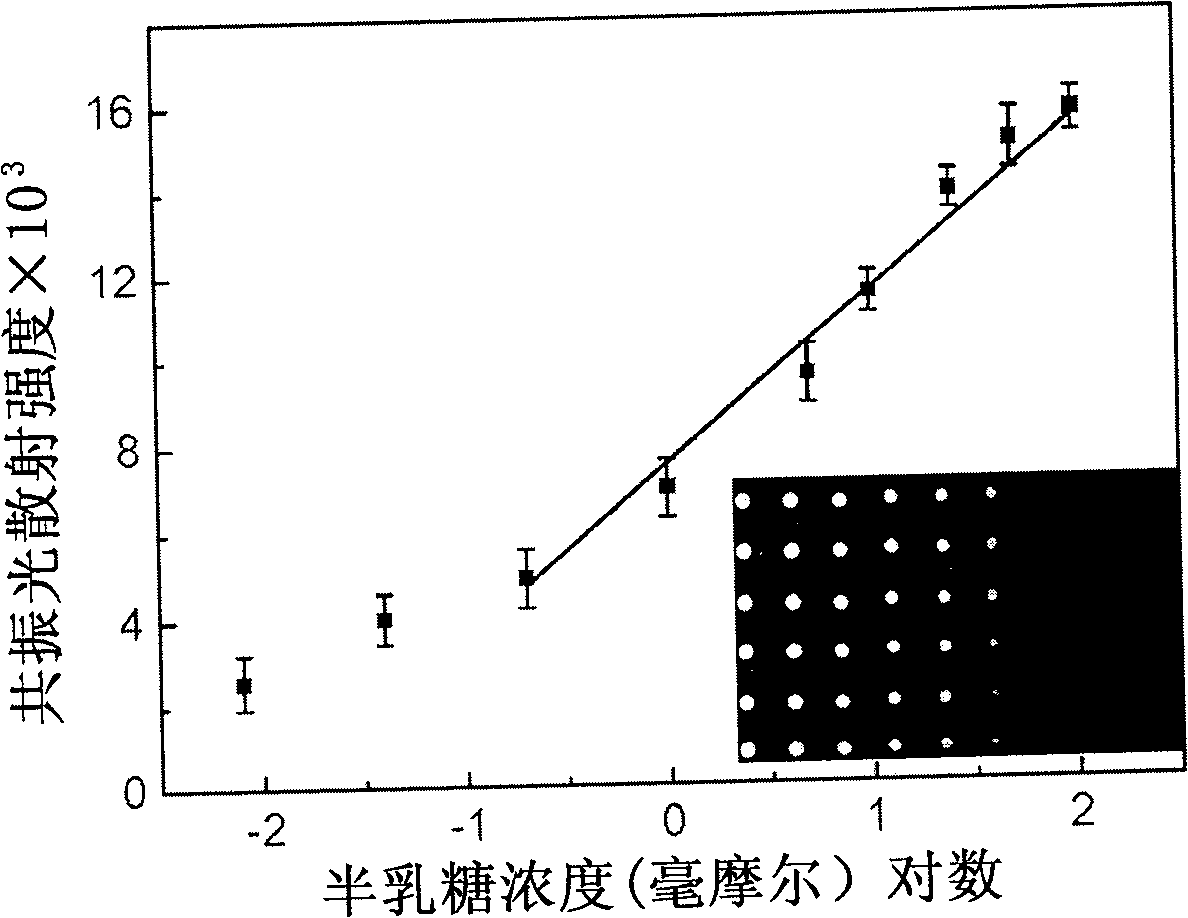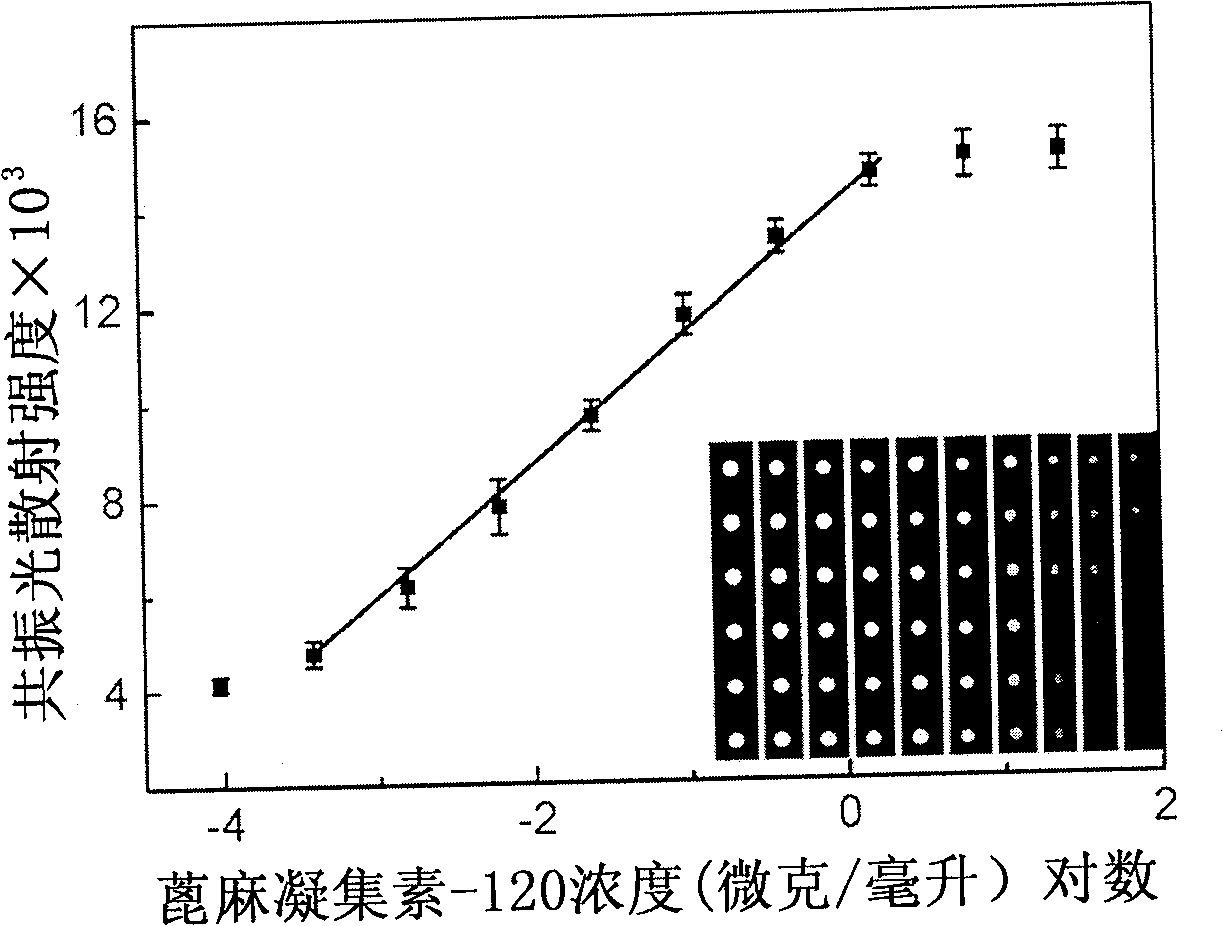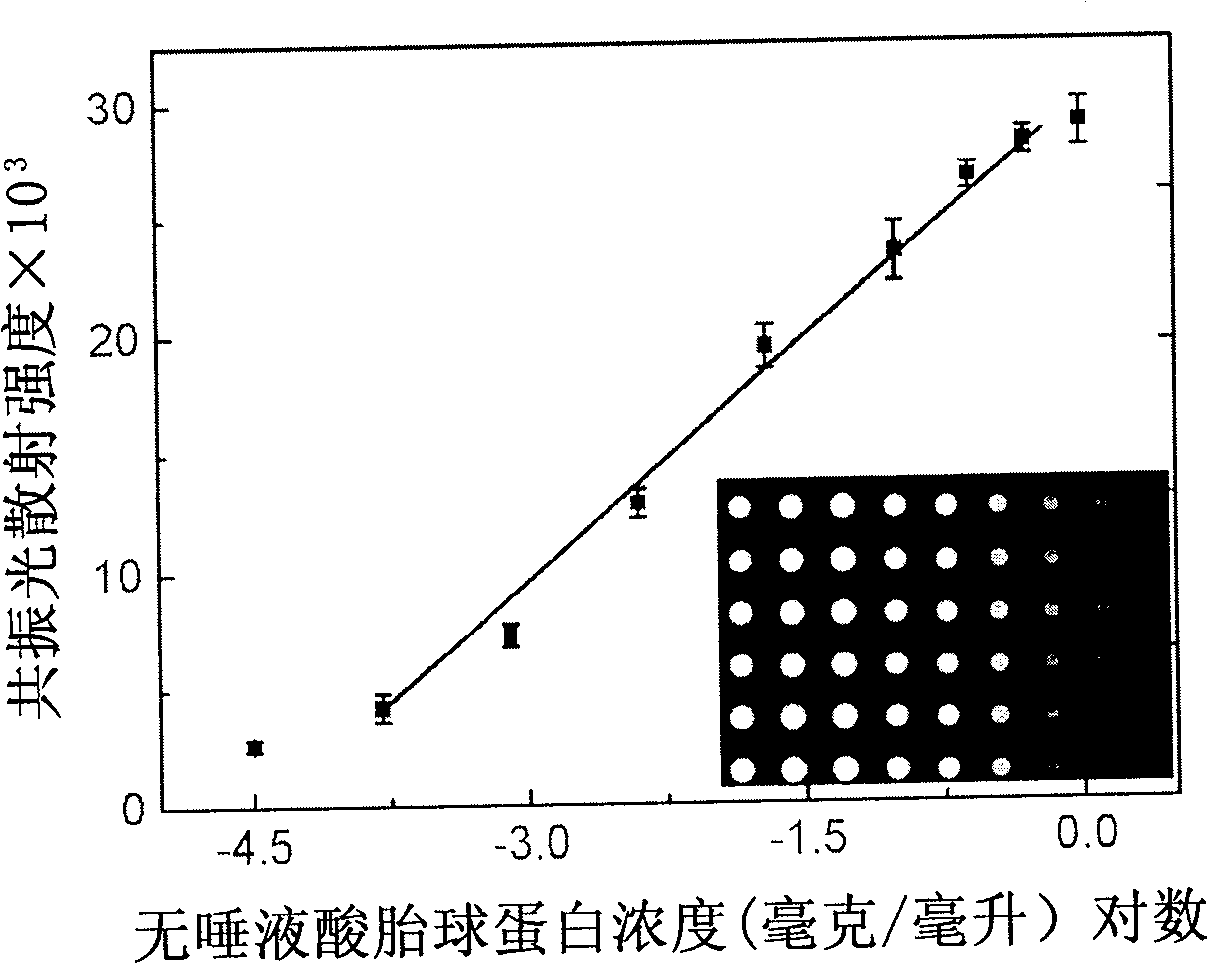Method for marking and detecting glucide biochip
A technology of sugar substances and biochips, which is used in biological testing, material inspection products, scattering characteristics measurement, etc. to achieve rapid stability, good selectivity, and good biocompatibility.
- Summary
- Abstract
- Description
- Claims
- Application Information
AI Technical Summary
Problems solved by technology
Method used
Image
Examples
Embodiment 1
[0026] Example 1: Labeling and detection of 4-aminophenyl-α-D-mannopyranoside (Man-α)
[0027] (1) Synthesis of peptide-modified gold nanoparticles
[0028] Cystylylalanylleucylaspartylaspartate and cystylalanylleucylaspartylaspartylglycyllysyl (biotinyl)glycine in molar ratio 9 : 1 prepares the mixed solution of polypeptide mixture, mixes the mixture of gold nanoparticles modified by sodium citrate and polypeptide mixed solution with a molar ratio of 1: 50000, and reacts at room temperature after 1-2 hours. ) to purify the reaction product by centrifugation to obtain polypeptide-modified gold nanoparticles; disperse the polypeptide-modified gold nanoparticles in a neutral phosphate buffer solution and store at 4°C;
[0029] (2) Making carbohydrate biochips
[0030] A 100μM-50mM 4-aminophenyl-α-D-mannopyranoside (Man-α) monosaccharide chip was produced on the SmartArrayer 48 chip production system provided by Beijing Boao Biotechnology Co., Ltd., through 1% (w / v ) bovine se...
Embodiment 2
[0038] Example 2: Labeling and detection of 4-aminophenyl-β-D-galactopyranoside (Gal-β)
[0039] (1) Synthesis of peptide-modified gold nanoparticles
[0040] Cystylylalanylleucylaspartylaspartate and cystylalanylleucylaspartylaspartylglycyllysyl (biotinyl)glycine in molar ratio 9 : 1 prepares the mixed solution of polypeptide mixture, mixes the mixture of gold nanoparticles modified by sodium citrate and polypeptide mixed solution with a molar ratio of 1: 50000, and reacts at room temperature after 1-2 hours. ) to purify the reaction product by centrifugation to obtain polypeptide-modified gold nanoparticles; disperse the polypeptide-modified gold nanoparticles in a neutral phosphate buffer solution and store at 4°C;
[0041] (2) Making carbohydrate biochips
[0042] 8 μ M-100 mM 4-aminophenyl-β-D-galactopyranoside (Gal-β) monosaccharide chip was produced on the SmartArrayer 48 chip production system provided by Beijing Boao Biotechnology Co., Ltd., passed 1% (w / v) Bovine...
Embodiment 3
[0050] Embodiment 3: labeling and detection of ribonuclease B (RNase B)
[0051] (1) Synthesis of peptide-modified gold nanoparticles
[0052] Cystylylalanylleucylaspartylaspartate and cystylalanylleucylaspartylaspartylglycyllysyl (biotinyl)glycine in molar ratio 9 : 1 prepares the mixed solution of polypeptide mixture, mixes the mixture of gold nanoparticles modified by sodium citrate and polypeptide mixed solution with a molar ratio of 1: 50000, and reacts at room temperature after 1-2 hours. ) to purify the reaction product by centrifugation to obtain polypeptide-modified gold nanoparticles; disperse the polypeptide-modified gold nanoparticles in a neutral phosphate buffer solution and store at 4°C;
[0053] (2) Making carbohydrate biochips
[0054] A glycoprotein chip of 0.16 μg / ml-1mg / ml ribonuclease B (RNase B) was produced on the SmartArrayer 48 chip production system provided by Beijing Boao Biotechnology Co., Ltd., passed through 1% (w / v) bovine serum albumin ( BSA...
PUM
 Login to View More
Login to View More Abstract
Description
Claims
Application Information
 Login to View More
Login to View More - R&D
- Intellectual Property
- Life Sciences
- Materials
- Tech Scout
- Unparalleled Data Quality
- Higher Quality Content
- 60% Fewer Hallucinations
Browse by: Latest US Patents, China's latest patents, Technical Efficacy Thesaurus, Application Domain, Technology Topic, Popular Technical Reports.
© 2025 PatSnap. All rights reserved.Legal|Privacy policy|Modern Slavery Act Transparency Statement|Sitemap|About US| Contact US: help@patsnap.com



